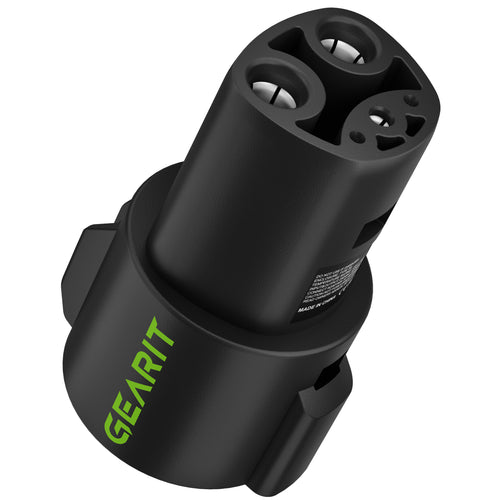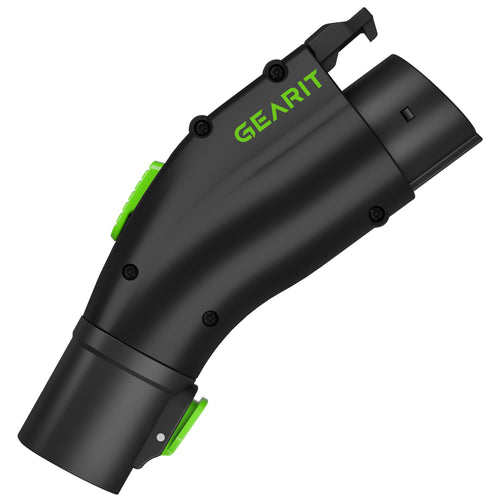EV Charging cable selection ensures safe, efficient, and reliable charging for your electric vehicle.
Choosing the right cable means matching your EV’s requirements with the correct connector type, power rating, and charging station level.
With so many options available, varying in size, type, and compatibility, it’s essential to understand what each offers.
Using the correct cable supports battery health and saves time during every charge.
This guide clears the size, type, and compatibility confusion in one quick read.
Understanding EV Charging Cable Selection
Choosing the right EV charging cable is key to a safe and efficient charging experience. Several factors should be considered to make the best choice for your electric vehicle.
Importance of Correct Cable Selection
- Safety: Ensures safety during charging sessions.
- Efficiency: Optimizes charging efficiency and reduces energy loss.
- Longevity: Enhances the longevity of both the cable and the vehicle's charging system.
Key Factors
-
Connector Types: EVs may use different connectors like Type 1, Type 2, CCS, CHAdeMO, GB/T, and Tesla connectors. It's important to know your vehicle's connector type to ensure compatibility with the charging point.
-
Cable Length: The right cable length provides flexibility without excess. A long cable might seem handy, but managing it during storage can be a hassle.
- Amperage Requirements: Your EV charger must handle the amperage your vehicle requires. This ensures optimal charging times and prevents overheating.
Charging Levels
Different levels of charging exist:
- Level 1: Uses standard home outlets and is slower.
- Level 2: Faster charging found at public stations or home wall boxes.
- Fast Charging: Available at specific stations, best for quick top-ups during travel.
Key Factors in EV Charging Cable Selection
Several crucial factors influence the choice of an EV charging cable. These include connector compatibility, cable length, overall quality, and the difference between spiral and straight cable types. Each of these elements can impact the efficiency and convenience of your charging experience.
1. Connector Types
Vehicle-Side Connector: Choosing the right connector type is essential for compatibility with your electric vehicle. Common types include Type 1 for many American models and Type 2 for most European models. It's important to check your vehicle's specifications to make sure you choose the correct connector.
Infrastructure-Side Connector: Your charging station or power source can also dictate the required connector type. A standard household plug might work for home charging, but public stations may require other types like a CHAdeMO or CCS. Identifying the right infrastructure-side connector ensures a smooth charging process.
2. Cable Length
When selecting the cable length, you can choose between 4 and 10 meters. Longer cables give more flexibility to reach various power sources but can be heavy and harder to manage.
Conversely, shorter cables are easier to handle and store, though they offer less flexibility. Make sure you choose a length that suits your charging environment, whether for home or public station use.
3. Cable Quality
High-quality cables are built to be durable and withstand wear and tear over time. Opting for a well-known brand can prevent frequent replacements and ensure safety during charging.
Pay attention to materials and manufacturing standards that contribute to longevity and reliability. A durable cable is less likely to degrade quickly, which can help prevent charging issues and maintain your EV's performance.
Cable Type: Spiral vs. Straight
Spiral Cables:
Spiral cables retract when not in use, which helps reduce clutter and make storage easier. They come with a more organized appearance but often have limited reach compared to straight cables. This can be advantageous in small spaces where convenience and tidiness are priorities.
Straight Cables:
Straight cables provide greater reach, making them suitable for various charging setups. However, they require manual coiling and can be bulky to store.
They are ideal if you need the flexibility to connect to different power sources without worrying about reaching limitations.
Choose wisely based on your charging habits and space availability.
Understanding Charging Modes and Cable Ratings
Electric vehicle charging involves various modes and cable ratings, each playing a crucial role in how efficiently your EV charges.
Understanding these modes and cable ratings will help you choose the right equipment to meet your charging needs.
Charging modes define the connection setup, while cable ratings determine the charging speed.
Charging Modes Overview
-
Mode 1: This involves a direct connection from your EV to a standard household outlet. There is no communication between the charger and the vehicle, making it a basic option suitable for low-power charging.
-
Mode 2: This mode also uses a standard outlet but includes an in-cable control box. This box provides added safety features, like temperature monitoring and fault detection, offering more security than Mode 1.
-
Mode 3: This mode connects your EV to dedicated charging stations, typically offering more robust control and protection features. These stations are more efficient in managing power delivery and are commonly found in public or residential setups.
- Mode 4: This mode employs specialized equipment and is known for offering fast charging through direct current (DC). It is designed for rapid charging, significantly reducing the time needed compared to other modes.
Cable Current Ratings
Cables are rated by how much current they can carry, influencing how quickly your EV can be charged.
-
16 Amps (A): Suitable for standard home outlets, these cables are slower but adequate for overnight charging.
-
32 Amps (A): Often used in public charging stations, these cables provide faster charging if your vehicle supports it.
- 63 Amps (A): These are high-capacity cables used for fast charging, requiring specialized infrastructure and a compatible vehicle.
Choosing the right cable rating ensures not only optimal charging speed but also safety and efficiency. Higher-rated cables are beneficial for rapid charging but ensure that your setup can handle the increased power.
Compliance with Standards and Regulations
When selecting EV charging cables, it is essential to focus on compliance with both international and local standards. This ensures safety and compatibility for users while supporting the broader goals of electric vehicle infrastructure.
IEC 62196 Standard
The IEC 62196 standard ensures compatibility and safety in EV charging. It defines the configurations and dimensions for connectors and inlets, helping to make sure that your charging setup can work across different brands and regions.
By adhering to this standard, you are more likely to ensure that your EV is compatible with a wider range of charging stations and equipment.
This universal approach is key to eliminating potential compatibility issues, reducing headaches and increasing convenience for EV owners.
Also Read: NEMA vs. IEC
National and Regional Standards
While international standards like IEC 62196 provide a foundation, local regulations may impose additional requirements for EV charging equipment.
These might include specific wiring guidelines, safety measures, and labeling rules. Staying informed about these regulations can help you avoid problems and ensure compliance with local laws.
Here is a helpful approach:
- Research local standards: Identify any national or regional regulations.
- Check compatibility: Make sure your equipment meets these criteria.
- Implement safety measures: Follow guidelines for wiring and protection features.
By ensuring your equipment complies with these standards, you can maintain safety and align with legal requirements in your area.
Choosing the Right Charging Cable
When selecting the right charging cable for your electric vehicle (EV), consider the following factors:
-
Cable Length: A longer cable provides flexibility in positioning, but it can be heavier and more expensive. Choose the right length based on where you usually park your car relative to the charging station. A shorter cable is often sufficient for home use.
-
Cable Type: Different EVs require different cable types. Ensure the cable fits your car's charging inlet and power outlet. Compliance with your vehicle's specifications ensures compatibility and efficiency.
-
Amperage and Power Rating: Check the amperage your EV supports. For instance, 48 amp cables are designed for high power needs. Higher-rated cables may provide faster charging times but are thicker and pricier.
-
Durability: Look for cables with a high-temperature rating and good flexibility. Stranded wire is often preferred for ease of use and movement.
- Cost: Budget is a crucial factor. While premium cables might offer better durability and power handling, they are also more expensive. Compare options to find the best balance for your needs.
Carefully consider these aspects to ensure you get a charging cable that meets your requirements effectively.
Frequently Asked Questions
Learn how to select the right EV charging cable for your electric car. Find the answers to common questions like choosing the correct cable type, determining the best wire, and calculating the proper cable size.
Can I use any charging cable with my EV?
You cannot use just any charging cable with your EV. Compatibility depends on your vehicle model and the type of charging station. Most public charging stations require a Mode 3 charging cable, which is not always provided with the car.
How do I choose an EV charging cable?
Selecting an EV charging cable requires checking your vehicle's specifications. Ensure the cable supports the charging speed and power your car needs. Consider the connector type your car requires and the compatibility with charging stations you plan to use.
What is the best wire for EV charging?
The best wire for EV charging typically depends on the amperage needs and distance from the power source. High-quality, durable cables ensure efficient power transfer. Choose a wire that meets the power requirements and safety standards for your specific setup.
How to calculate cable size for EV charger?
Calculating the cable size involves considering the charging power level, distance to the socket, and local electrical codes. The calculation ensures the cable can handle the required current without overheating, providing safe and efficient charging.
Is a 10mm cable ok for an EV charger?
A 10mm cable may be suitable for certain lower-power EV chargers. However, you need to verify. Consult your EV charger's installation guide and consider factors like charging power and cable run length to ensure safe operation.




















































